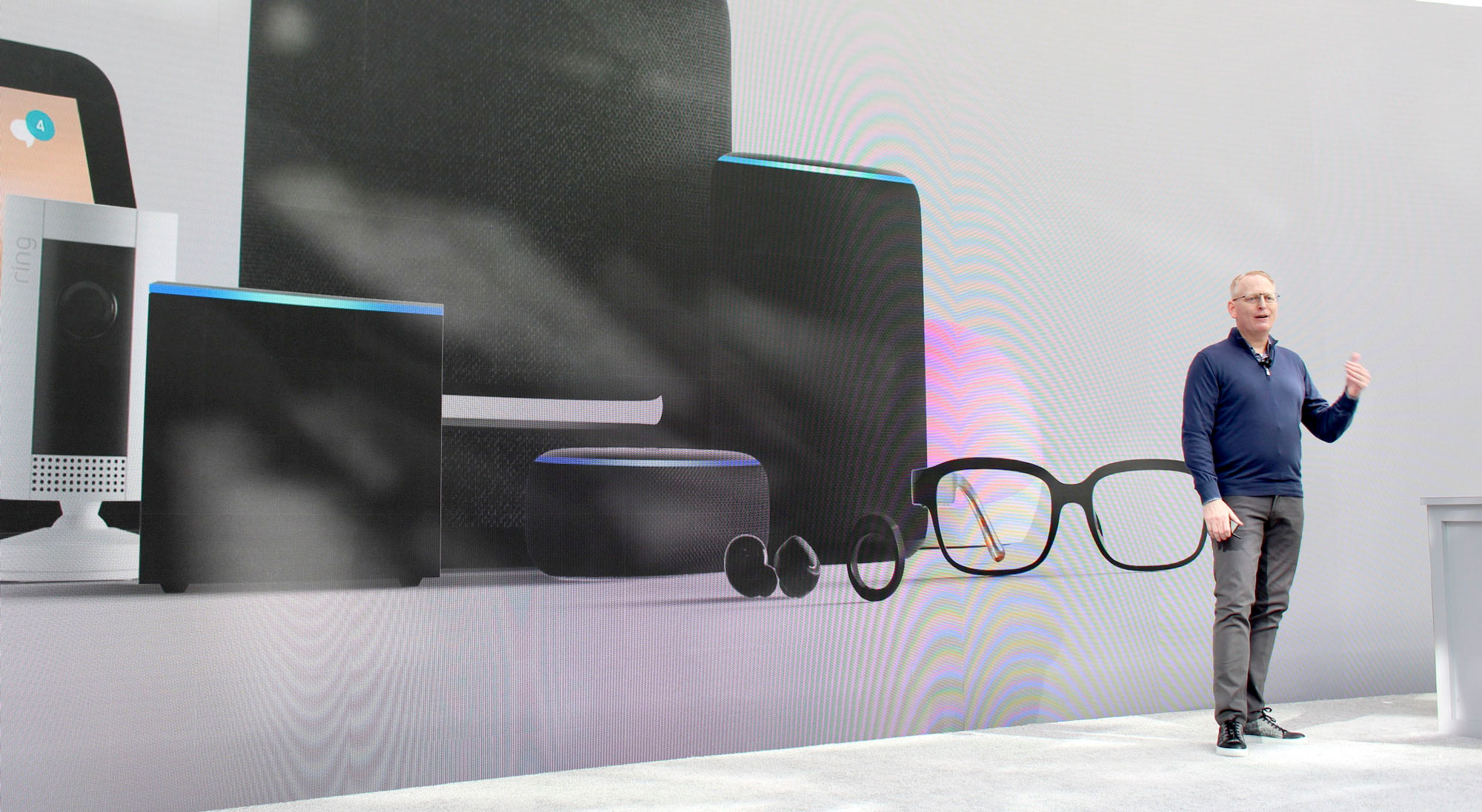Amazon wants you to be surrounded with Alexa—wherever you are

The news: Amazon unveiled a dizzying number of new gadgets yesterday, including wireless earphones (Echo Buds), a smart ring (Echo Loop), and smart glasses (Echo Frames). They all provide hands-free access, so you can ask Alexa to play a song, give you directions, or whatever else you may need, on the go. The products cost between $129 and $180 each.
What’s behind all this: Taking these three products together, there’s a clear push to move Alexa beyond the home and onto your body. While Google Assistant is embedded into Android smartphones, people currently use Alexa only at home, and there’s no Amazon smartphone.
That’s a limitation Amazon wants to overcome, pushing deeper into people’s lives, and that’s partly why it wants interoperability between Alexa and other tech companies’ products (though Google, Apple, and Samsung are not playing ball). As the first to launch a home voice assistant, Amazon has a huge advantage over its competitors: more than 100 million Echo devices have been sold, and they are the default product many people think of when discussing smart speakers.
The big question: Will people be comfortable walking around openly talking to a voice assistant? It’s one thing in the home, but quite another on the subway or in the park. Many smart watches have a speaker facility, but it’s very rare to see anyone using it in public.
What else: Amazon also announced a night light for kids, an Echo you can use in the bathroom, a smart oven, and tracking devices for pets. Oh, and you can now make Alexa sound like Samuel L. Jackson, if you like.
Gender controversy: Amazon said it is committed to a woman’s voice as the default for its Alexa software, despite a UN report’s conclusion that always-available, always-friendly female assistants add to damaging gender stereotypes.
Sign up here to our daily newsletter The Download to get your dose of the latest must-read news from the world of emerging tech.
Keep Reading
Most Popular
Large language models can do jaw-dropping things. But nobody knows exactly why.
And that's a problem. Figuring it out is one of the biggest scientific puzzles of our time and a crucial step towards controlling more powerful future models.
How scientists traced a mysterious covid case back to six toilets
When wastewater surveillance turns into a hunt for a single infected individual, the ethics get tricky.
The problem with plug-in hybrids? Their drivers.
Plug-in hybrids are often sold as a transition to EVs, but new data from Europe shows we’re still underestimating the emissions they produce.
Stay connected
Get the latest updates from
MIT Technology Review
Discover special offers, top stories, upcoming events, and more.